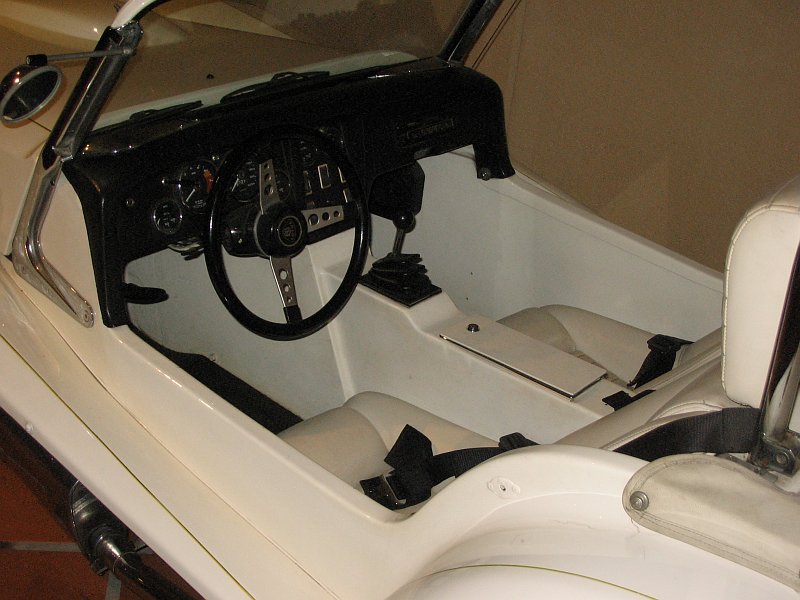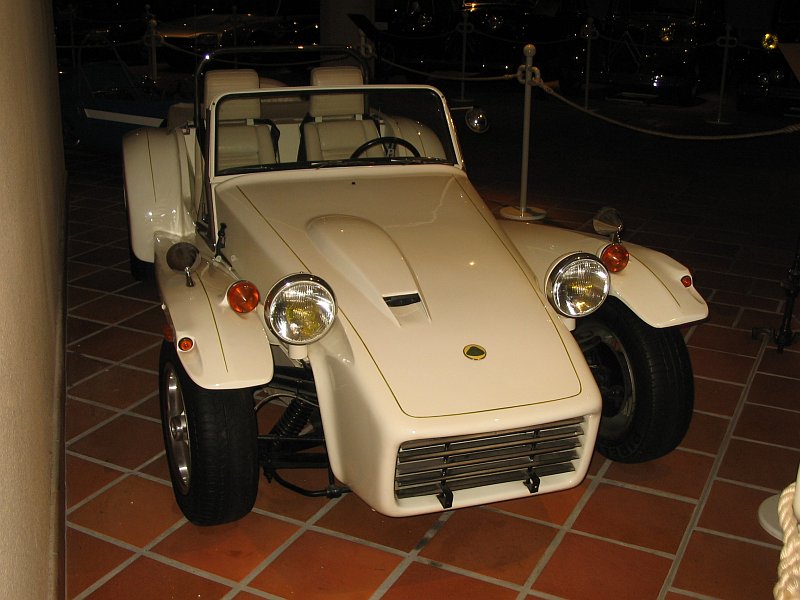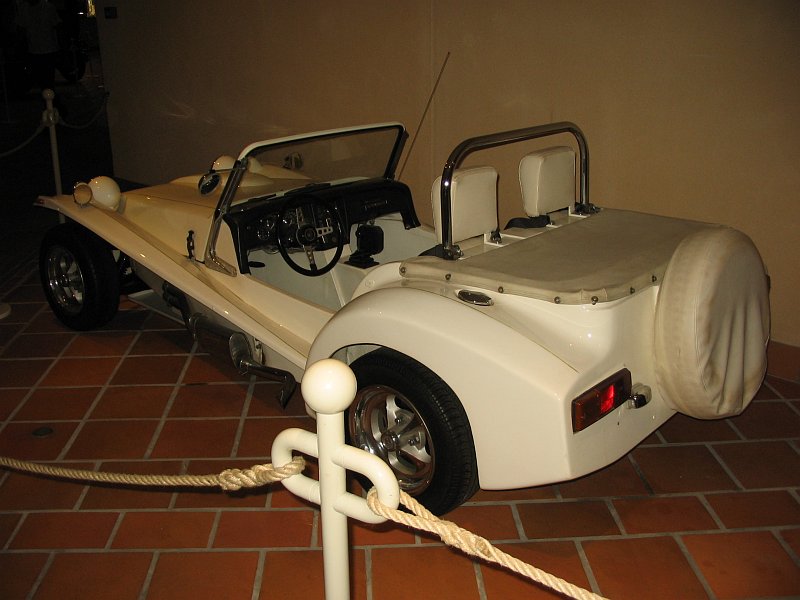Description
The Lotus Super Seven S4 8 CV was the high-performance variant of the final Lotus-designed Seven series, representing the last evolution of Colin Chapman’s iconic lightweight sports car before Caterham took over production. Introduced in 1970, the Super Seven S4 8 CV combined the raw, elemental spirit of the earlier Sevens with a more aerodynamic fiberglass body and a refined chassis layout. It was intended to broaden the appeal of the Seven by offering more power, comfort, and usability while preserving the defining qualities of lightness, simplicity, and driver engagement.
The designation “8 CV” referred to the French fiscal horsepower rating of its engine, rather than its actual output—a system used in continental Europe for taxation. In practical terms, the Lotus Super Seven S4 8 CV was powered by the Ford 1.6-litre Twin Cam engine, tuned by Lotus and similar to the one used in the Elan and Europa. This advanced inline-four featured twin overhead camshafts and produced approximately 120 to 125 horsepower in the Super Seven specification. In a car weighing barely 600 kilograms, this gave it extraordinary performance—0 to 100 km/h in about 6.5 seconds and a top speed near 190 km/h, figures that placed it among the fastest road-legal sports cars of its time.
The S4 chassis was a development of the proven Series 3 design but adapted to accommodate the new, wider fiberglass body. The steel space frame retained the structural lightness and rigidity that had made earlier Sevens such agile handlers, while the revised dimensions provided slightly more room for both occupants and mechanical components. The suspension layout remained pure Lotus: independent at the front with unequal-length wishbones and coil springs, and a live rear axle located by trailing arms and coil springs. This simple but perfectly balanced configuration gave the car exceptional handling, with sharp turn-in, superb mid-corner grip, and beautifully communicative steering.
The fiberglass body was the most striking change introduced with the S4. Designed to be both more aerodynamic and more practical, it featured smoother, squarer lines and integrated wheel arches that replaced the cycle-style fenders of earlier cars. The nosecone was broader and incorporated faired-in headlights, while the cockpit was larger and better protected from the elements. The tail section was now more cohesive, with a hinged boot lid providing real luggage access—a first for the Seven. These refinements made the S4 more usable as a road car while giving it a distinctive late-1960s aesthetic, somewhere between the minimalist racer and a proper touring sports car.
Despite these updates, the S4 8 CV remained uncompromisingly driver-focused. The interior was sparse but functional, trimmed in simple vinyl with exposed aluminum panels and a flat dashboard carrying only essential Smiths instruments—tachometer, speedometer, oil pressure, and water temperature. The driving position was low and intimate, placing the driver close to the chassis centerline and giving perfect visibility over the front wings. The unassisted steering was light and precise, and the short-throw four-speed manual gearbox delivered crisp, mechanical shifts. Every aspect of the driving experience was raw, mechanical, and immersive.
On the road, the Super Seven S4 8 CV was electrifying. The twin-cam engine, known for its free-revving nature and distinctive induction sound, pulled strongly from low revs and came alive above 4,000 rpm, delivering a hard-edged surge of power that matched the chassis perfectly. With so little mass to move, every throttle input translated into immediate acceleration. The steering offered pure, unfiltered feedback, and the suspension, while firm, absorbed imperfections without breaking composure. On twisting back roads, the car’s agility was unmatched—it could change direction with surgical precision and seemed to pivot effortlessly around its driver. Few cars, even decades later, could match the intimacy and immediacy of the S4’s responses.
The 8 CV designation also reflected Lotus’s intention to appeal to the European market, particularly France, where the Seven had developed a dedicated following among driving enthusiasts. The Twin Cam engine gave the car both refinement and flexibility for long-distance touring, while its lightweight construction ensured remarkable fuel efficiency and mechanical simplicity. It remained, however, a purist’s machine—no creature comforts, minimal sound insulation, and only the barest weather protection.
Although dynamically brilliant, the S4’s styling divided opinion. Traditionalists missed the exposed mechanical purity of the earlier Sevens, while others appreciated the modern fiberglass body’s aerodynamic efficiency and practicality. The additional width and smoother surfaces gave it a more substantial presence on the road, but for some enthusiasts, it dulled the visual lightness that had defined the Seven’s personality. Nevertheless, in performance terms, the S4 8 CV was the most advanced and capable Seven ever built by Lotus.
Production of the S4 lasted only from 1970 to 1972, with roughly 600 examples built across all configurations, including the Twin Cam 8 CV version. It proved to be the final iteration of the Seven under Lotus ownership, as Colin Chapman shifted the company’s focus to higher-volume, more profitable road cars and Formula 1 engineering. The rights and tooling for the Seven were sold to Caterham Cars in 1973, which reverted to the earlier S3-style chassis and bodywork while continuing to evolve the design—eventually making the Seven one of the most enduring sports cars in history.
Today, the Lotus Super Seven S4 8 CV occupies a special place in the marque’s history. It represents both the end of an era and a bold attempt to modernize an icon. Collectors value it for its rarity, distinctive styling, and the thrilling performance of the Lotus Twin Cam engine. While it may lack the raw, skeletal purity of the earlier Sevens, the S4 8 CV offers a unique blend of performance, refinement, and late-1960s character—a bridge between the uncompromising racer and the more versatile sports car.
The Lotus Super Seven S4 8 CV was, in essence, Chapman’s final word on the Seven philosophy: a car that combined the engineering genius of Lotus with just enough modernity to survive a changing automotive world. It remained true to its heritage—light, fast, and utterly connected to the road—while proving that evolution need not come at the expense of soul.




